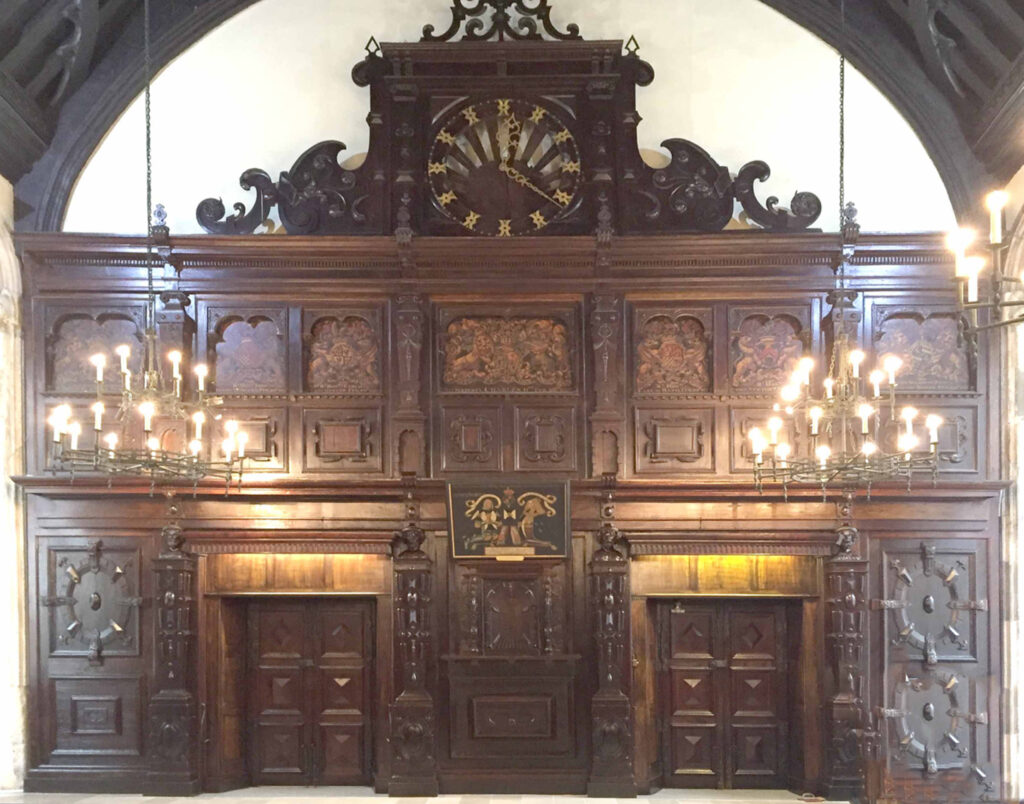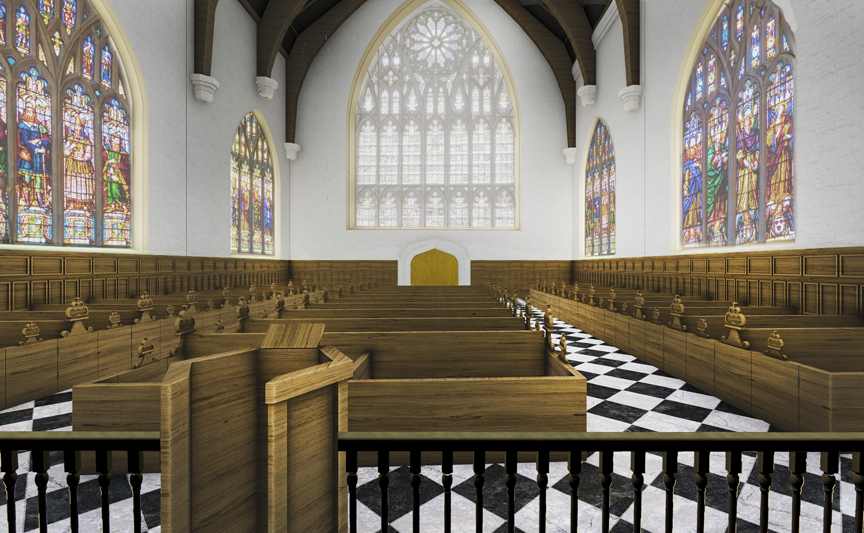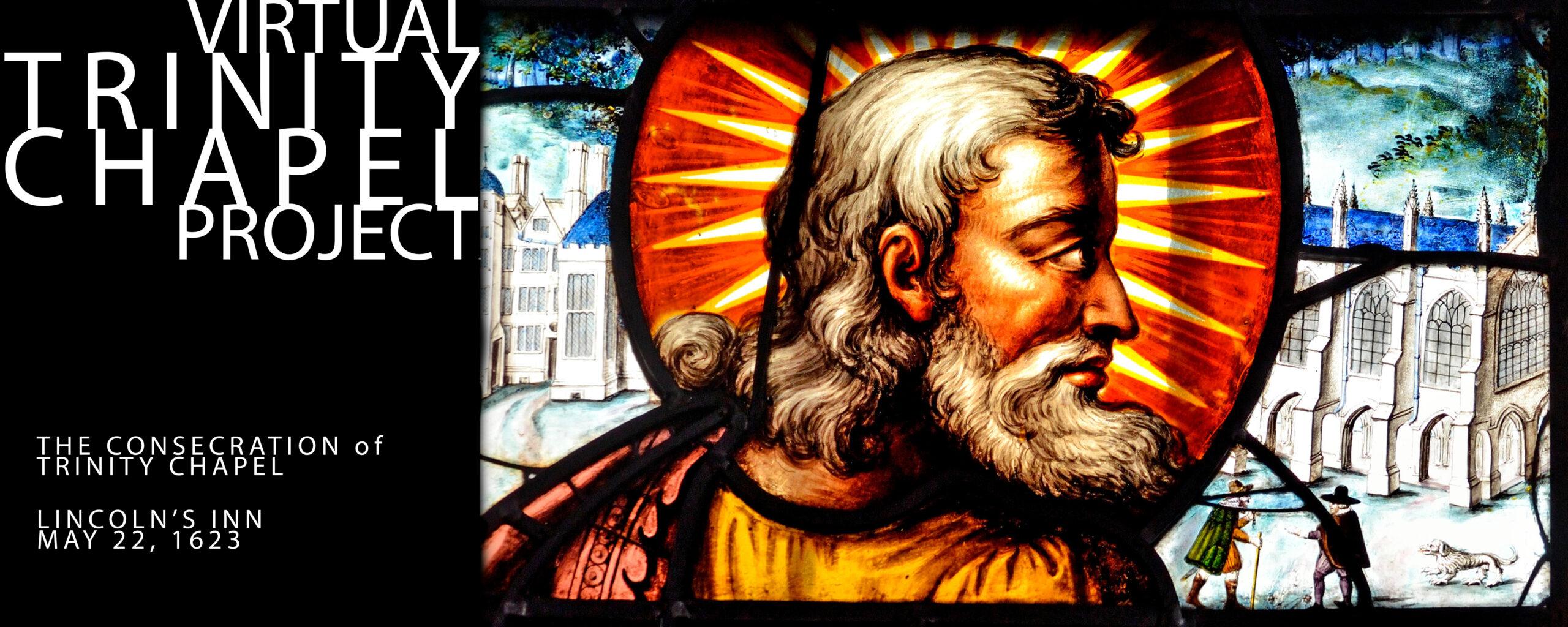
The members of Lincoln’s Inn had much to feel good about at the end of this service. Their efforts to build a Chapel had been successful; the service that consecrated it and made possible its use as a worship space had also been successful, attracting a large crowd of people including – according to Bishop Montaigne’s official account of the event – some very distinguished members of England’s nobility and its legal establishment.
So the occasion of the consecration of Trinity Chapel was also an occasion of celebration for the residents of Lincoln’s Inn. On the evening of May 21st, the night before the Consecration, the Inn elected both Bishop Montaigne and his chief legal officer Henry Marten, the Chancellor of the Diocese of London, as honorary members of Lincoln’s Inn. The next day, after the religious ceremonies were complete, the representatives of the Diocese of London and of St Paul’s Cathedral who had taken part in the service joined members of Lincoln’s Inn in retiring to the Great Hall of the Inn, next door to the Chapel, for a festive dinner. Afterwards, presumably, it being a Thursday, everyone left to go about the tasks of their everyday lives.
Except for the small glitch, toward the end of the 17th century, of having the east wall start to fall down, Trinity Chapel quickly became an integral part of the grounds and of the life of Lincoln’s Inn, a place it continues to hold today. But the events of the day continued to have consequences for those who participated in the morning’s activities. Some members of the congregation — including Francis Russell, cousin-in-law of Donne’s friend and patron Lucy Russell, Lady Bedford — took notes on Donne’s sermon and preserved them among their papers. Just over a week after the service, John Chamberlain included gossip about the event in a letter to his friend Dudley Carleton. Some time later that year, John Donne published his sermon for the occasion, with a dedication to the Masters of Lincoln’s Inn. He would continue to republish it almost annually for the next several years.
Nevertheless, a comment by Donne in his Dedicatory Epistle for this publication “To the Masters of the Bench, and the rest of the Honourable Societie of Lincolnes Inne” suggests that the Consecration service for Trinity Chapel had begun to have an afterlife in another kind of conversation, a divisive one between those who supported James and Charles in their desire to arrange a marriage between Charles and a European Catholic princess and those who thought this showed the current English monarchy to be too soft on Catholicism.
Donne says that he has agreed to the publication of his sermon even though in his sermon he “had no occasion to handle any matter of Controversie between us and those of the Romane Perswasion, yet the whole body and frame of the Sermon, is opposed against one pestilent calumny of theirs, that we have cast off all distinction of places and of dayes.” We have already noted that in his sermon compares the practices of the Church of England as exemplified in the Consecration service for Trinity Chapel with the practices of a wide range of religious groups, ranging from Jews to Catholics to Lutherans to Calvinists. The Dedicatory Epistle’s narrowing of this range of attention specifically to “those of the Romane Perswasion” seems unusual, seems out of keeping with the actual content of the sermon, which in fact is only tangentially – and mostly for rhetorical effect – about the religious practices of different groups.
More light may be shed on this matter if we consult John Chamberlain’s letter to Sir Dudley Carleton, English Ambassador to the Hague, often noted in discussions of the Consecration of Trinity Chapel because of its comments about how many people were in attendance. The context of Chamberlain’s comments about events at Lincoln’s Inn is, however, illuminating. The real subject of Chamberlain’s letter is the current news about Charles, the Prince of Wales, and his travels in Spain in hopes of securing for himself a marriage with the Infanta Maria Anna of Spain, daughter of Philip III.[40] Chamberlain’s letter is full of news about what is thought certain to be an imminent royal wedding; indeed, Chamberlain claims that “We look daylie to heare of the solemnisation of the marriage” for “On Monday the Duke of Richmond,[41] the Lord Treasurer,[42] Marques Hamilton,[43] Lord of Arundell,[44] Secretarie Calvert[45] and I know not who els are to go toward Southampton to set all things in order thereabout for the reception and entertainment of the Infanta.” Yet Chamberlain seems not at all happy about this event; he reports grumbling among English noblewomen about how they are to behave in the Infanta’s presence, while men of the court “knowe or say little” of the progress of the affair.
In the midst of this Chamberlain tells Carleton that, “About this day sevenight the Spanish ambassador[46] laide the foundation or first stone of the chappell that is to be built at St. James for the Infanta,” the chapel designed by Inigo Jones to be used by the Infanta for Catholic worship. He goes on, “Other ceremonie I heard of none but of a crosse and that he gave some 25″ among the workemen and overseers: but Lincolns Inne new chappell was consecrated with more solemnitie by the bishop of London[47] on Ascension day.”
This seemingly random linking of events at Lincoln’s Inn with the Spanish ambassador’s laying of the cornerstone for what we know today as “the Queen’s Chapel” suggests that in the context of Protestant apprehension about their future king’s being married to a Catholic queen and the arrival of officially sanctioned Catholic worship in England after over sixty years of prohibition, the Consecration service at Lincoln’s Inn may have seemed to some to be itself a sign of a disturbing sympathy toward Catholicism. Hence, Donne’s interest, when he came to write his Dedicatory Epistle for his Encaenia sermon, seems to have been in defining his sermon, and by extension, the Consecration Service itself, as actively anti-Catholic rather than reflective of a large and growing toleration of and perhaps sympathy for Catholic worship.
See the attached pages for copies of these and other forms of remembrance that are gathered to illustrate how the Service of Consecration for Trinity Chapel was remembered and recorded.

